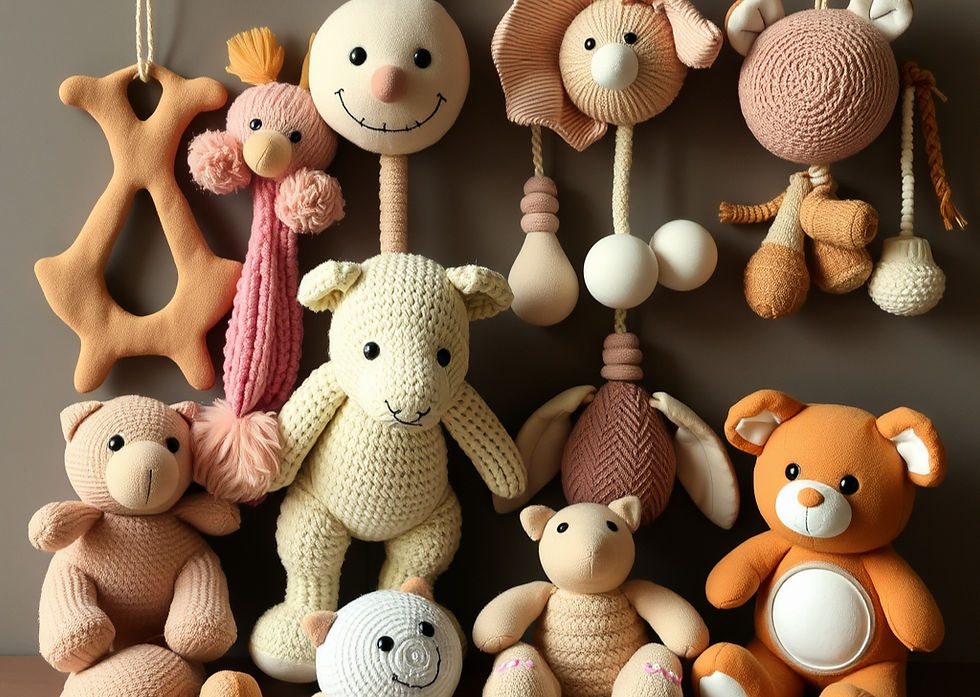Sleep: One of the Childhood Foundations
- Teri

- Apr 26, 2022
- 4 min read

Sleep is one of the critical foundations of early childhood. Sleep heals our bodies. It is the time when our bodies rejuvenate for the next day. What we generally forget is that when sleep is impacted it can affect development in children. It also impacts mood, behavior and overall health. Let’s dig in…..
New parents are somewhat prepared or at least understand that sleep deprivation is part of the deal. For parents who have children who do not easily transition to sleeping through the night it is a grueling process. Parents need to have a “full” tank to function at their optimum. They need rejuvenation to deal with the daily stresses of parenting as well as the daily life stresses. Helping children to find their optimal sleep routine is in the best interest of the entire family.
Sleep Needs by age:
Let’s discuss sleep requirements for each age: Babies 0-1 year need approx. 12-17 hours of sleep. Toddlers age 1-2 need approx. 11-14 hours and children age 3-5 need approx. 10 -13 hours. These times include both night sleep and nap sleep. These are general guidelines and some children need more or less. Generally infants are eating every 3-4 hours and their nap and sleep schedule revolves around eating. Gradually over time infants' awake time stretches and naps become less frequent but longer in duration. Babies start to sleep through the night between 3-6 months of age. The nap schedule is usually starting to evolve into 2-3 naps per day during that time as well. These naps become longer in duration.
Now we understand what a typical sleep requirement is for our babies, so what happens when they don’t sleep enough.
Many of the children I work with struggle to create their own positive sleep habits. Their routines are atypical and cause a lack of sleep for both themselves and their parents. These babies are often fussy and have difficulty soothing themselves. They may often demand more frequent feeding or comfort from their parents. For breastfed babies, they often wake up more frequently due to the efficiency in which breast milk is digested, however, even breastfed babies can sleep through the night. Helping babies hone their self soothing skills in an important job. Babies need help to figure out how to help themselves back to sleep. If not addressed the child will not have the capacity to tolerate the work required for developmental growth. It takes attention and engagement to grow and develop which can be hindered when a child lacks sleep.
How can you help your child prepare for sleep?
The first thing I address is the sleep environment. We want to ensure the room is dark and cool. Utilizing white noise helps reduce the sudden sounds that often occur at night especially for babies who still sleep in their parents room. Swaddling is a technique that can be used to help very young babies while they still exhibit strong startle reflexes. The swaddle when done correctly provides a flexion pattern that mimics the comfort of the womb. Sleep sacks are helpful for those older babies to help keep them warm when they no longer need to be swaddled. I would avoid any wearable item that is supposed to eliminate the startle reflex by placing the arms and legs into an extended posture. This will make movement more difficult in the long run. It would be a preference to allow older babies to learn to integrate the startle reflex on their own through voluntary movement. It will diminish with time. I also strongly encourage a consistent bedtime routine. There is not a time that is too early to start these routines. For example: Rocking the baby while reading a book, turning off the lights, turning on the white noise and laying the baby down, preferably before they are completely asleep. This will ensure consistent practice with falling asleep on their own. It takes time and practice to become proficient in self-soothing and calming.
Back to Sleep
We can not avoid the important topic of “back to sleep”. In an effort to reduce SIDS deaths in infants the government established safe sleep guidelines. These include: putting your baby to sleep on their back, removing all items from their crib (no blankets, toys, bumpers etc.) and using a pacifier if possible. When a baby is able to roll themselves from their back to their belly and the reverse you do not have to reposition them back onto their back while sleeping. The key is putting them down on their backs to go to sleep. Babies should sleep in their own beds - i.e. a bassinet, crib or playpen in the parents room. At this time the recommendation by AAP is for children to room share until age 6-12 months.
Final Thoughts
If you are struggling to get your little one to sleep or forming a sleep routine, start with the basics. Take a look at the environment again. Utilizing white noise whenever possible. Keep your routine consistent. Finally if the basics don’t work remember to reach out to the pediatrician. They are your partner in the care of your child. They can help rule out any medical reasons why sleep may be a struggle such as reflux, constipation or other medical conditions. The bottom line is we need to help our little ones become proficient sleepers, for their overall health and development as well as ours.
Resources for the Back to Sleep/Safe Sleep campaigns:






Comments